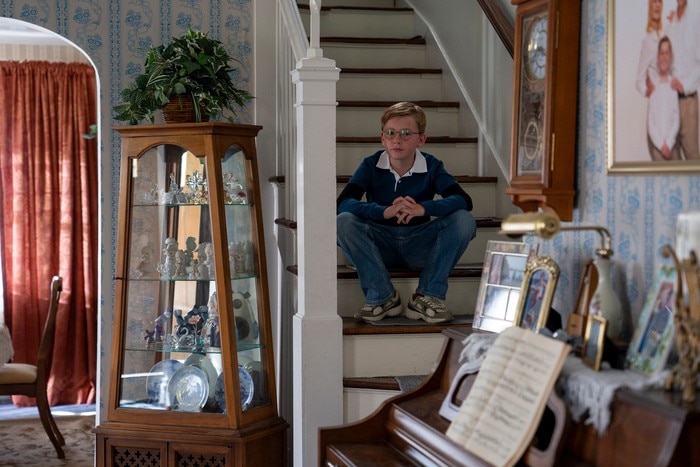The house is perfect. Or so it seems. In Holland (2025), a psychological thriller directed by Mimi Cave, everything begins here: with an immaculate interior, as neat as a display window and silent as a trap. It’s in this first scene, set in a bourgeois, feminine world, that protagonist Nancy Vandergroot (Nicole Kidman) begins her slow descent into suspicion and loss. Set in the small town of Holland, Michigan – painstakingly recreated with obsessive detail using sets and models – the film offers a visual and architectural reflection on the duplicity of everyday life: everything is in order, everything conforms, and thus, everything is unsettling.
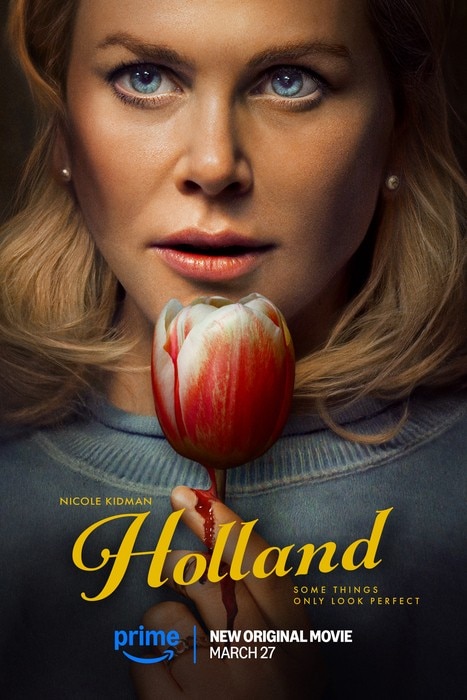
Nancy, the protagonist, is a teacher, a devoted mother and wife, and above all, a model resident of a neighborhood that looks like something out of a digital rendering. The houses are colonial, symmetrical, and quiet. The lawns are perfectly manicured, the wooden fences flawless. The interior of her home is a choreography of clean surfaces, sharp corners, and coordinated furniture. It’s a world that seems designed to leave no trace. It’s suburban aesthetics on the brink of sterility, where every building is a display and every display is a mask. Nancy’s home also feels like a stage, a theater of appearances: floral wallpaper, velvet lampshades, and a dominance of sage greens and dusty pinks create a space where everything is poised and controlled. Even Nancy’s clothes blend into the setting: at the first family dinner, she wears an antique pink turtleneck under a pale green sweater, a living embodiment of the domestic color palette.
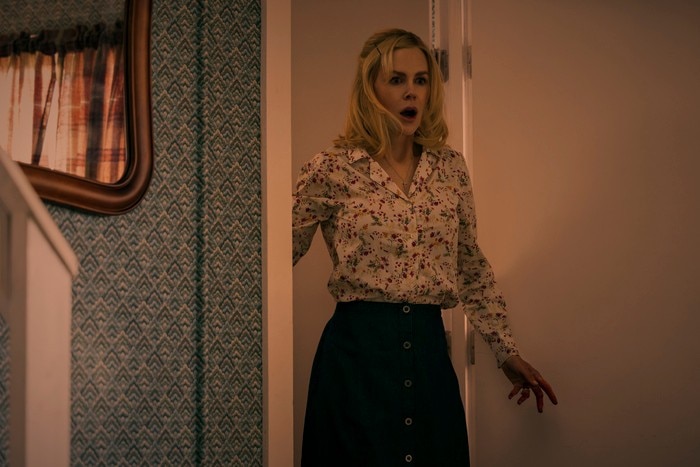
The dining room is one of the film’s formal high points. Symmetrical, frontal shots reveal a direction that arranges the space as if it were a stage set with an open curtain. Heavy, dark pink drapes frame the table, illuminated by a central chandelier. In the background, two table lamps balance a large decorative vase. White-curtained windows make every hour of the day feel like a scene. It’s not a home; it’s an inhabited diorama.
Scale models, or miniatures, take center stage in Holland. The model railway built by Nancy’s husband and son is a highly detailed replica of the town: a silent, parallel world that ultimately reveals more than meets the eye. The model is an archive of the unconscious, and also an oracle. It’s here that Nancy uncovers disturbing details, visual clues, and simulations of the real that foreshadow the discovery of her husband’s double life. But it’s in the dreams where the equilibrium cracks and implodes. In one of the film’s most striking dream sequences, Nancy walks through a deserted, nighttime Holland, where mannequin-like human bodies roll and pile up at her feet. The houses resemble an oversized, distorted model, submerged in water up to their windows. The perspective is warped, the proportions altered. It’s as if the entire town has sunk into an exhibition tank. Reality has turned into a dysfunctional museum set, like a diorama that’s lost its purpose.
It’s as though the language of architecture stops responding to the logic of function and starts obeying the subconscious: the house becomes an amplifier of discomfort, and the town a refracted image of the repressed.
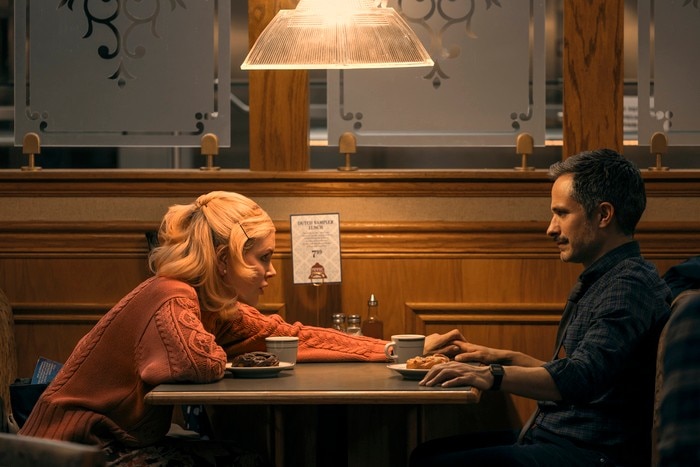
But the true aesthetic shift happens in a scene that, in its own way, serves as a visual manifesto. Nancy prepares a meatloaf. She decorates it with a line of ketchup in the shape of a heart: a simple gesture, almost a textbook example of the perfect 1950s housewife. But then, lost in thought, she squeezes the bottle until it’s empty, covering the heart with a thick, disturbing burst of red that transforms the meat into a bloodstain. The gesture is unsettling not because it’s violent, but because it’s automatic, passive, as if the body sensed something was wrong before the mind did.
Nancy picks up the meatloaf and tries to restore order: she removes the ketchup with her hands, remixes it, mashes the meat, and moves it to the pristine kitchen counter. The contrast between the bare hands, the raw meat, the messy red, and the spotless kitchen surface is striking. It’s the film’s first real “visual mistake.” The scene disrupts the perfect geometry of the environment: it’s the moment when the aesthetics of control are violated, when the architecture of appearance becomes dirty, fragmented, and alive.
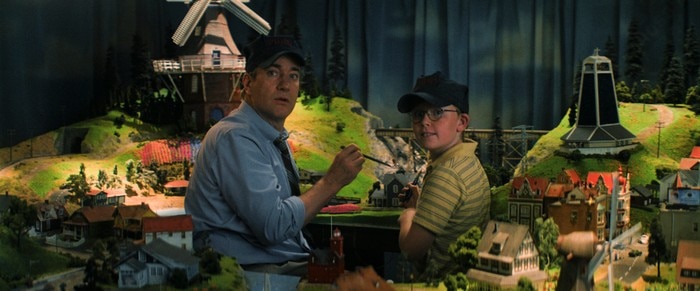
Here, Cave aligns herself with the work of Todd Haynes, using décor as a gilded cage; with David Lynch, especially Inland Empire, where dreams have no boundaries and reality is constructed as a series of mental stage sets; and with Ari Aster, in the precise imagery that implodes into organic, visceral detail. Like in Hereditary, here the house becomes a container of repressed pain, a living organism that records everything and remains silent.
In Holland, the director creates a work that is architecture itself: she sketches madness as a human-scaled space, a place where nothing is out of place except the souls of those who live there. And as the space deforms – in dreams, in models, in automatic gestures – we understand that the real home is never made of bricks. It’s the one in the mind. And sometimes, that’s where it burns first.
Immagine di apertura: Jude Hill in Holland (Mimi Cave, 2025) ©Amazon Content Services LLC Credits: Jaclyn Martinez/Prime


